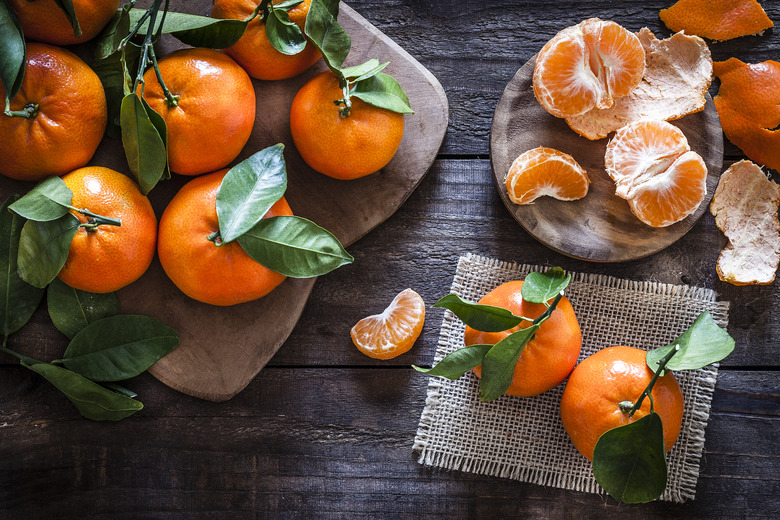How To Make A Vitamin C Indicator
How to Make a Vitamin C Indicator. We all know that nutritious food contains vitamins and minerals. Many foods come with nutrition labels. However, the healthiest foods are often the whole foods, such as produce, that don't come with such a handy guide. It is possible, though, to compare the amounts of certain vitamins and minerals in foods by using a homemade indicator. One easy indicator to make, using inexpensive materials, is a vitamin C indicator.
Step 1
Make a corn starch paste by taking a tablespoon of corn starch and mixing it with enough distilled water to form a paste consistency.
Step 2
Add about 8 ½ oz. (250 mL) water to the cornstarch paste and bring to a boil. This forms a starch solution.
Step 3
Place about 2 ½ oz. (75 mL) water in a flask or glass. Add 10 drops of the solution you made in Steps 1 and 2 to the water.
Step 4
Add the 2 percent solution of iodine slowly until the color of the liquid in the flask or glass becomes dark bluish purple, almost black. You can now use this solution as your vitamin C indicator.
Step 5
Use this solution to compare the vitamin C concentration of different foods. The more vitamin C present, the lighter the color of the indicator solution after you add the food to it. The easiest to test are fruit juices. Put about 1 tsp. (5 mL) of the indicator solution in the test tube. To compare, you can either observe and record how many drops you add before the solution becomes colorless or fill several test tubes with indicator, add the same amount of drops of juice, and compare the colors. The lightest color will have the most vitamin C.
Things Needed
- Cornstarch
- Distilled water
- 2 percent solution of iodine (or iodine, ethanol and potassium iodine)
- Eyedropper
- Test tubes
- Flask or glass
TL;DR (Too Long; Didn't Read)
If you don't have a 2 percent iodine solution, you can make your own. To do this, measure out about 1 ½ oz. (45 mL) of ethanol and dissolve 2 grams of iodine in it, mix the resulting solution with almost 2 oz. (55 mL) of distilled water, then dissolve 4.5 grams of potassium iodine into this solution.
Cite This Article
MLA
Contributor, . "How To Make A Vitamin C Indicator" sciencing.com, https://www.sciencing.com/make-vitamin-c-indicator-2257973/. 7 April 2008.
APA
Contributor, . (2008, April 7). How To Make A Vitamin C Indicator. sciencing.com. Retrieved from https://www.sciencing.com/make-vitamin-c-indicator-2257973/
Chicago
Contributor, . How To Make A Vitamin C Indicator last modified March 24, 2022. https://www.sciencing.com/make-vitamin-c-indicator-2257973/
